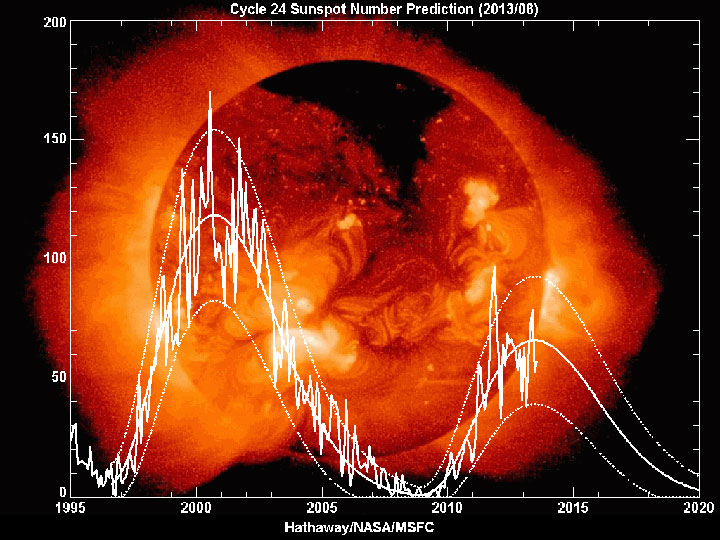TORONTO – According to NASA, the sun’s magnetic field is about to be turned on its head.

This isn’t something unexpected: the sun’s magnetic field flips about every 11 years or so.
The sun goes through a cycle where it experiences a maximum and a minimum. During solar maximum, there are more sunspots and the sun is more active. During solar minimum, there are fewer sunspots and the sun is rather quiet. We are currently at the midpoint of solar maximum.
Watch: Solar flares
“It looks like we’re no more than three to four months away from a complete field reversal,” said solar physicist Todd Hoeksema of Stanford University. “This change will have ripple effects throughout the solar system.”
During the field reversal, the sun’s polar magnetic fields weaken, drop to zero and then the fields come back up, but this time with opposite polarity.
The sun’s magnetic field, called the heliosphere, is far-reaching. When it changes, its effects are felt all the across our solar system, past even Pluto, nearing interstellar space.
This solar cycle, called Solar Cycle 24, has been relatively quiet compared to past cycles. In fact, it is the quietest cycle in 100 years. This has led to some speculation that we are experiencing something similar to a Maunder Minimum.
The Maunder Minimum refers to a period of low solar activity that occurred from 1645 to 1715. The lack of sunspots coincided with a climatic period called the “Little Ice Age” where rivers in Europe, that were normally ice-free – such as England’s Thames River – froze. Glaciers advanced, and Viking settlers abandoned Greenland. The event was named after Edward Walter Maunder who studied the cycle in the late 1800s (it was given the name in a 1976 paper published in the journal Science).
However, the sun has been around for 4.6 billion years and its cycles are still not entirely understood. Scientists continue to study our nearest star and investigate its influence on Earth’s climate.


Comments